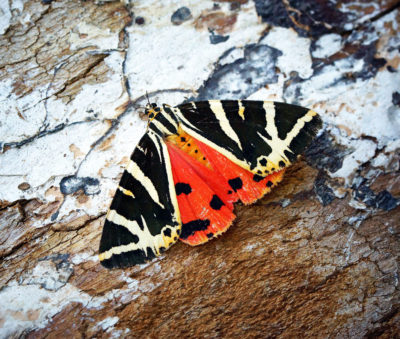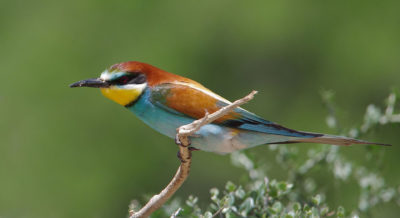A Jersey tiger moth. Ben Sale / Flickr
Fifty-five animal species in the United Kingdom have been displaced from their natural ranges over the past decade due to rising temperatures. The species have shifted as far as hundreds of miles poleward in search of cooler climes, with some crossing seas to arrive for the first time ever in the U.K., according to a new study in the Journal of Applied Ecology.
The research, led by scientists at the Zoological Society of London, looked at a decade of social media postings, U.K. government environment reports, and more than 110 scientific articles. The displaced species include the leathery sea squirt, Jersey tiger moth, purple heron, Eurasian nuthatch, and black bee fly, a newcomer to the U.K. arriving in 2016. The European bee-eater, a migratory bird, has recently begun nesting as far north as Nottinghamshire, in central England, far from their natural breeding grounds in Africa and central and southern Europe, a press release noted. More than 60 percent of the species are invertebrates.
The scientists found that 24 percent of the displaced species were having negative impacts on their new habitats, including “damages to crops and production forests; biofouling; human disease spreading and increased risk of injuries; and pressure on residential maintenance and planning permissions,” the study stated. Twenty percent of the displaced species reportedly had positive impacts, primarily through tourism such as birdwatching.
“We are currently massively unprepared for the climate-driven movement of species that is happening right now in the U.K.,” said Nathalie Pettorelli, a senior research fellow at the Zoological Society of London and lead author of the study. “As it stands, society is not ready for the redistribution of species, as current policies and agreements are not designed for these novel species and ecological communities — particularly if those species have no perceived value to society.”




